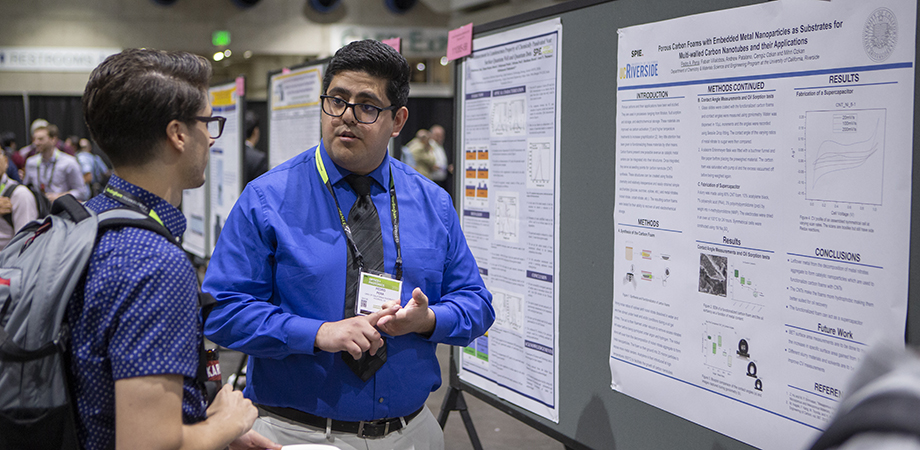A Practical Guide to Conferences, Part II: Poster Presentations

Initial academic conferences can be a stressful experience for students, especially those presenting their research for the first time. We asked SPIE Early Career Professional Mikhail Kats to adapt his recent Twitter thread — which also recruited advice and suggestions from his colleagues — into this comprehensive guide on preparing for, attending, and presenting at conferences. Part II is below. Don't forget to check out Part I, Part III, Part IV, and Part V as well!
Part II: Preparing for a poster presentation
If you are presenting a poster, your preparation can be nearly identical to what I described for an oral presentation. Like talks, posters are most often put together using the PowerPoint format but setting the dimensions of a single slide to be the size of your poster. Consider getting a template from someone who has previously made a good-looking poster and using it as the basis for your own.
• The most common way people will interact with you during a poster session is by approaching you and asking you to explain or discuss your poster. You need to be able to give a 3-4-minute explanation of your work, referencing the various graphics, text, and figures on your poster. Be prepared to expand your concise explanation for someone who might be very interested in the details of your work.
• As with a formal presentation, I recommend preparing backup slides. Almost no one does this for posters, but it can be helpful. You can print out your backup slides and keep them on you throughout the poster session or use a tablet so that you can quickly access them when you get a relevant question.
• Just like with a talk, practice makes perfect. Do at least one or two practice sessions where you display your poster and have colleagues ask you questions. Keep in mind that, unlike a talk, there is no pre-set amount of time for you to speak before someone might ask you questions. Pro tip: To save on printing costs for the practice sessions, use a projector to project your poster on the wall.
• Because of the less structured setup, the poster-presentation process of someone stopping by, asking questions, and responding to your explanations, tends to repeat itself throughout the session. Sometimes people come up to the poster when you're in the middle of speaking with someone else, and you need to decide whether to restart or to have the new folks wait until you've finished your earlier conversation. Navigating this can be a bit difficult; in your practice session, simulate this with various group members and peers mimicking conference-goers, stopping by at random times to hear your explanation and ask questions.
• After your practice session, get feedback from your colleagues and use that feedback to improve your poster as well as your responses and your conversation style.
• Make sure you print your poster before you go to the conference, and transport it in a poster tube. You can also print posters on cloth, which can then be folded up for less bulky transportation.
• Poster sessions require more stamina than oral presentations: you may be standing next to your poster and speaking with visitors for more than two hours. Come to your poster session well-rested, wear comfortable shoes, and bring a water bottle.
Read Part I, Preparing for a Presentation; Part III, Preconference Planning; Part IV: At the Conference; and Part V: Preparing for an Online Conference.
A NOTE FROM THE AUTHOR: These articles were adapted from a thread I wrote on Twitter in response to a request by Manuel Martinez (UT-El Paso). The various conference-prep strategies described here have been honed over the last five years with my research group at UW-Madison, so I want to extend a big thanks to the students and postdocs who have helped develop these tools. Thank you also to Andrea Armani (USC) and Rachel Grange (ETH Zurich) who encouraged me to write this advice up as a proper article, and to Rachel for her editing work. Special thanks to Jennifer Choy (UW-Madison) for key suggestions, use of a sample slide, and critical reading of the draft.
| Enjoy this article? Get similar news in your inbox |
|



